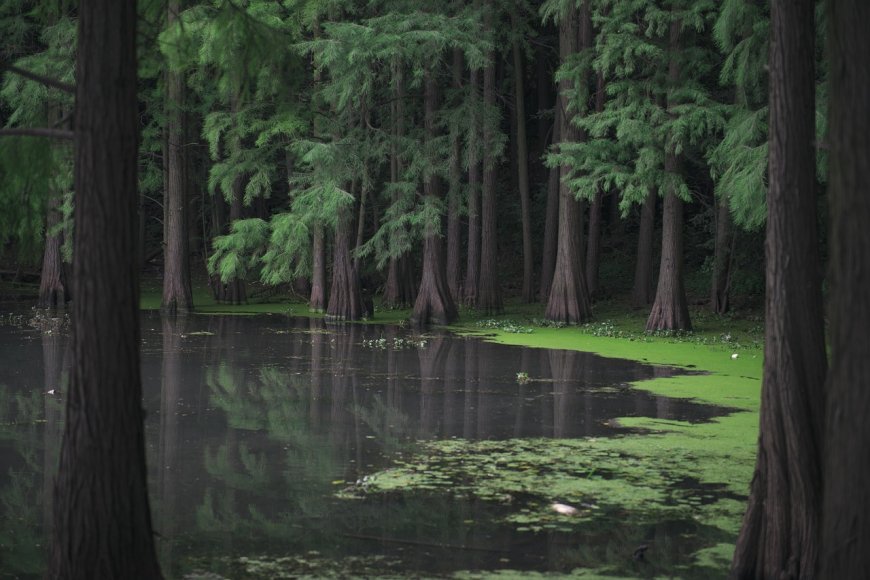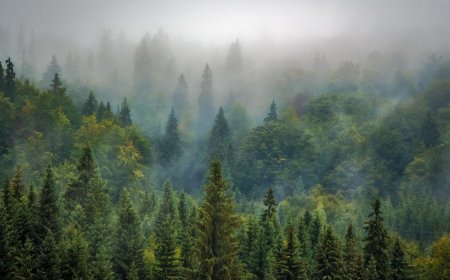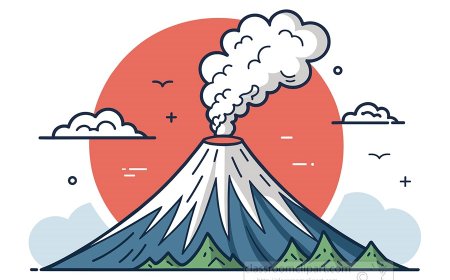Temperate Forests for Kids: Fun Facts, Seasons, and Why They Matter
Explore temperate forests in this kid-friendly guide. Learn about their trees, seasons, and why they are important to nature and people.

🌲🍂 Temperate Forests: Seasons of Change
🌼 Introduction
Temperate forests are beautiful woodlands that experience four seasons: spring, summer, fall, and winter. Unlike tropical rainforests, temperate forests have trees that lose their leaves each year and animals that adapt to changing weather. These forests are important because they provide homes for many species, clean the air, and give us wood, food, and recreation.
In this article, you’ll learn what temperate forests are, where they are found, what grows there, and why they are so important to our planet.
🧬 What Is a Temperate Forest?
Temperate forests are forests that grow in regions with mild to cold climates.
Main Features:
- Four distinct seasons
- Moderate rainfall (about 30–60 inches per year)
- Rich soil good for plants and trees
Temperate forests often have a mix of:
- Deciduous trees that lose their leaves in fall
- Evergreen trees that keep their needles all year
🌍 Where Are Temperate Forests Located?
Temperate forests are found in many parts of the world:
North America:
- Eastern United States
- Canada
Europe:
- United Kingdom
- Germany
- France
Asia:
- Eastern China
- Japan
- Korea
Southern Hemisphere:
- Parts of Chile
- New Zealand
- Australia
These forests cover about 25% of Earth’s forested land.
🌿 Layers of the Temperate Forest
Like rainforests, temperate forests have layers, but they are simpler:
- Canopy Layer
Tall trees like oaks and maples.
Many birds and squirrels live here. - Understory Layer
Small trees and shrubs like dogwood and holly. - Forest Floor
Ferns, wildflowers, moss, and decaying leaves.
🌳 Common Trees and Plants
Temperate forests are full of trees that change with the seasons.
Deciduous Trees:
- Oak
- Maple
- Birch
- Beech
Evergreen Trees:
- Pine
- Spruce
- Fir
Plants:
- Wildflowers like trillium and violets
- Ferns and mosses
- Berries and mushrooms
🦊 Animals of the Temperate Forest
Many animals live in temperate forests and adapt to the seasons.
Mammals:
- Deer
- Bears
- Foxes
- Squirrels
Birds:
- Woodpeckers
- Owls
- Hawks
Reptiles and Amphibians:
- Snakes
- Salamanders
- Frogs
Insects:
- Beetles
- Butterflies
- Ants
Many animals hibernate or migrate during cold winters.
🌦️ Why Are Temperate Forests Important?
- Produce oxygen and absorb carbon dioxide.
- Protect soil and water supplies.
- Provide wood, paper, and food resources.
- Support recreation like hiking and camping.
- Offer homes for countless species.
They help keep Earth’s climate balanced.
🛑 Threats to Temperate Forests
- Logging and deforestation for timber and farmland.
- Air pollution from factories and cars.
- Climate change affecting temperatures and rainfall.
- Invasive species that crowd out native plants.
🌱 How Can We Help?
- Recycle paper and wood products.
- Plant native trees and plants.
- Learn about forests and share your knowledge.
- Support parks and protected lands.
Even small actions make a difference!
✨ Interesting Facts About Temperate Forests
- Many temperate forests are deciduous, dropping leaves each fall.
- The soil in temperate forests is very rich and fertile.
- Some trees live for hundreds of years.
- Temperate forests regrow more easily than tropical rainforests.
- The Eastern U.S. has some of the largest temperate hardwood forests.
- Many animals change coats to blend in with snow.
- Maple trees provide sap to make maple syrup.
📝 Kid-Friendly Summary
Temperate forests are woodlands with four seasons. In fall, the leaves turn beautiful colors before dropping off the trees. Many animals live there, from deer and bears to owls and salamanders. Temperate forests help clean the air, provide resources, and support life. We can help protect them by recycling and caring for nature.
🧠 Vocabulary Words
| Word | Definition |
|---|---|
| Temperate | Describes regions with mild to cold climates. |
| Deciduous | Trees that lose their leaves in fall. |
| Evergreen | Trees that keep their needles all year. |
| Canopy | The top layer of leaves in the forest. |
| Understory | The layer beneath the canopy with smaller trees and shrubs. |
| Hibernation | A deep sleep some animals use to survive winter. |
| Migration | Moving from one place to another with the seasons. |
| Invasive Species | Non-native plants or animals that harm the environment. |
| Carbon Dioxide | A gas plants absorb and humans breathe out. |
| Fertile | Soil that is rich in nutrients and good for growing plants. |
🎲 Interactive Quiz
Multiple Choice Questions
What are trees called that lose their leaves in fall?
A) Evergreen
B) Deciduous
C) Tropical
D) Conifers
What do temperate forests have?
A) Four seasons
B) No seasons
C) Hot temperatures all year
D) No animals
What is the top layer of a temperate forest?
A) Forest Floor
B) Canopy
C) Understory
D) Roots
What do many animals do in winter?
A) Hibernate or migrate
B) Eat more insects
C) Lay eggs
D) Change color to red
What is an example of an evergreen tree?
A) Oak
B) Maple
C) Pine
D) Birch
True or False Questions
Temperate forests are found only in North America.
True / False
Temperate forests have rich soil.
True / False
Deciduous trees keep their leaves in winter.
True / False
Some trees in temperate forests can live hundreds of years.
True / False
Temperate forests are not important to people.
True / False
Answer Key:
1–B, 2–A, 3–B, 4–A, 5–C, 6–False, 7–True, 8–False, 9–True, 10–False




















































